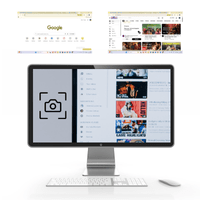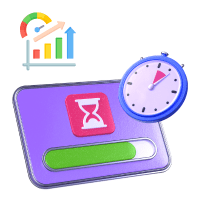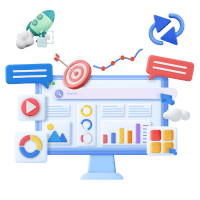In the current economy, every business is trying to reduce liability and operational costs. CEOs, CFOs, and CIOs’ top choice is to outsource as much as possible. However, outsourcing itself is not always successful due to many reasons. Today we are only focusing on how we make outsourcing successful and what process we can outsource. What are the tools to be used to make it successful?
3 Major Issues of Outsourcing
1. Communication:
As the team is not close by and most of the time companies outsource to the Philippines and India or any other Asian region, time zones and cultural differences are a big gap in execution and get the benefit of outsourcing completely.
2. Transparent System:
At a distance, we are not getting productivity & efficiency as desired. Effective use of resources and results delivered are major concerns. Productive issues are not identified which leads to bigger challenges.
3. Delegation:
Delegation & training is another major factor of outsourcing failure. When we delegate and do not provide details of each process with expecting results from the outsourcing teams, both clients and vendors do not have clarity on how and what to achieve.
So, what’s the solution to these problems? First, we need to identify proper tools and create processes and systems around them. We cannot achieve this in a day, might take 2-3 months but then you get to understand things properly.
Major Steps to Make Outsourcing Successful
1. Identify the Right Process and Hire the Right Team:
First, you internally identify which processes you want to outsource like support, lead generator, email campaigns, website VA’s etc.
Then create a detailed document on each step involved around it then set the expected results on it. Ex. If you are hiring a tele-caller then provide the scripts with all answers to objections then set benchmarks, how many calls need to be made and what is the countered terms or you can set how many positive appointments you need.
Based on these clear and specific requirements, use POC for a week or days based on the nature of the work. Then compare results based on the quality and quantity benchmarks you set. For this, you can use project management tools like DeskTrack where you can define checklists and templates for each task and process.
2. Evaluate Efficiency With Time Tracking Tool
Once your delegate process has been set then you identify with time tracking tool like DeskTrack, to evaluate which team is taking what amount of time to finish up. The tasks are given how much either of the team achieves in respected time tracked by DeskTrack. Then based on the results you can compare their quality. Quality compassion is also a key as a team giving more work with less quality and not helping you to achieve your desired goals.
3. Automate Timesheets & Billing of Peace of Mind
Time tracking tools such as DeskTrack, automated attendance to automated time tool help to create task lists. You can convert the time tracked to timesheets and can pay your outsourcing teams accurately, create invoices automatically and get paid.
So, DeskTrack helps you to create process frameworks, convert themes into tasks, track efficiency and productivity, and create timesheets and invoicing effortlessly.
Make Your Workday More Productive
Time tracking and work management can help you reach your goals faster.
Try 15 Days for Free

Overcoming Challenges in Time Tracking for Outsourcing
- Absence of Employee Buy-In: Employee opposition is a significant obstacle to the implementation of time monitoring for outsourcing. It can come across as invasive or micromanaging to them. In order to get beyond this obstacle, it’s critical to explain the advantages of time monitoring, such increased output and more equitable pay.
- Combining with Current Systems: It can be difficult to integrate time tracking software with current HR or project management systems. It’s critical to select a time tracking solution that facilitates or allows for simple integration.
- Precision and Dependability: It might be difficult to guarantee the precision and dependability of time monitoring data, particularly when staff members are working remotely. Use time tracking software with capabilities like activity monitoring, GPS tracking, and screenshot taking to get beyond this obstacle.
- Privacy and Compliance: Gathering sensitive information about employees’ work habits is a part of time tracking. It is crucial to guarantee privacy and abide by data protection laws like the CCPA and GDPR. Select a timekeeping program that respects privacy and has outsourcing examples like user consent management and data encryption.
- Cultural variations: Implementing time monitoring might be difficult when outsourcing to teams in other nations or areas due to cultural variations. It’s critical to recognize cultural differences and modify the time monitoring procedure as necessary.
Future Trends in Time Tracking for Outsourcing
- Automation and AI Integration: To improve accuracy and efficiency, workday tool will progressively include automation and artificial intelligence (AI) as technology develops. Artificial intelligence (AI) enables systems to forecast project schedules, assess work habits, and offer insightful data for more efficient resource management.
- Monitoring of Remote Work: As remote work becomes more common, time tracking systems will pay greater attention to keeping an eye on distant workers. To guarantee accountability and efficiency, features like activity tracking, screenshot monitoring, and GPS tracking will advance in sophistication.
- Integration with Project Management Tools: To create a smooth workflow, time tracking tool will be further integrated with project management tools. Better project planning and monitoring will be made possible by this integration, which will allow for automatic time tracking depending on project tasks.
- Prioritize Privacy and Compliance: Time monitoring systems will give priority to elements that ensure privacy and compliance with increasingly stringent data privacy requirements. This entails protecting data security, anonymizing data, and being open about data acquisition procedures.
- Integration with Mobile and Wearable Technology: Mobile apps and wearable technology will make time tracking tool more widely available. Employees will be able to more easily track their time even while they are on the go thanks to this.
Conclusion
To make outsourcing successful businesses need to take baby steps, make proper processes, delegate with expected results, and follow the results with the help of tools like DeskTrack. Automated timesheets and invoicing both. So, you can force your care businesses or especially keep doing whatever you love to do.







